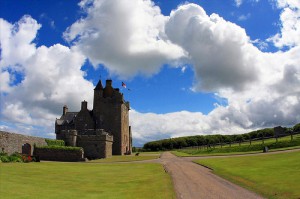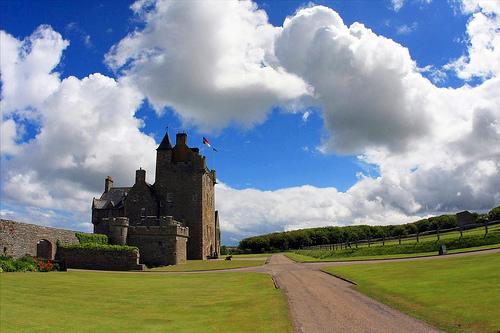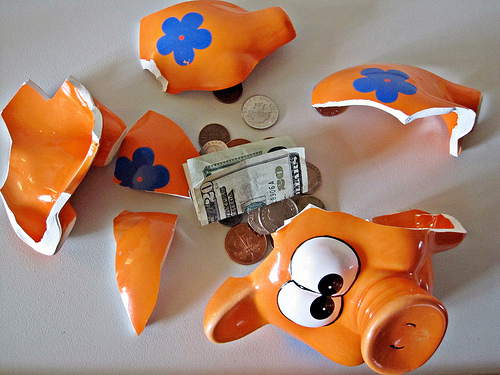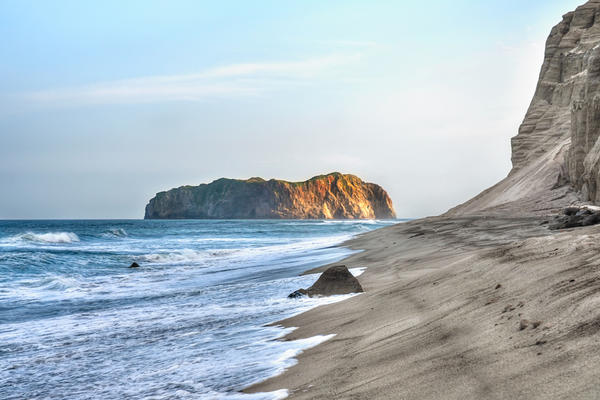When I travelled the world as a struggling student, I had lots of fun visiting castles and wandering around their lavish gardens pretending to be a princess. Now that my budget has grown just a little, I’m preparing to spend some time living in a castle or two. The thing is that keeping a castle up and running can cost a pretty penny, which is why so many castle owners have turned their huge homes into hotels and guest houses. Some cater for events, including weddings, while others simply offer a holiday escape with a difference.
There are castle-hotels in many parts of the world including the United Kingdom, which is where my adventures are set to begin. Most of these (30-40) are in Scotland, but there are close to another 40 spread across England, Ireland and Wales. Facilities differ vastly, so you need to know what you are looking for – or rather what you want.
A Taste of Cool Castles in the United Kingdom

I’ve been searching for castles that are not well known and touristy. So I was immediately attracted to Ackergill Tower. This is a magnificent 5th century Scottish castle that offers nothing but accommodation. It is right next to the sea, and there are 25 incredibly luxurious bedrooms. There’s none of the usual reception facilities (forget the Faulty Towers style reception – this is really classy) and there’s no bar or restaurant; but thereis a kitchen that produces memorable meals.
Another Scottish castle that appeals to me is Brickhill, which is a family home that just happens to be a castle. And the family has enough accommodation for about eight people. This luxurious 18th century castle is on the shores of the River Tay and there are gorgeous gardens on the property. Again there aren’t any restaurant or pub facilities, but accommodation comes with breakfast, and if you want dinner, it can be organized. While you may have to empty the bank for exclusivity, if you’re happy to share the castle with other visitors, it really isn’t that pricy.
Just a couple of hour’s drive from Scotland there’s another historic, if relatively stark-looking castle offering accommodation for as many as 50 people. Langley Castle, which is in Northumberland and was built in 1350, is one of just a few surviving Mediaeval fortified castles. It is beautifully decorated and there is an award-winning restaurant on site. This is named after Josephine, wife of the man who restored the castle in the 19th century. The Langleys had owned the castle a century before, and two of them (both earls) were beheaded in London for their part in the Jacobite uprisings of 1715! With this type of history nobody’s about to change the name of this castle.
There’s an even older and bigger castle – called The Castle – in Taunton, Somerset, that was once a Norman fortress. This unusual establishment offers 44 distinctly different bedrooms, five of which overlook the remains of the original 12th century garden. Accommodation at this enticing venue includes a full English breakfast and three-course dinner. Sure it is a bit more tourist-orientated than the others, but it’s historic and very special.
Considerably smaller, but also gorgeous, The Citadel in Shropshire can only accommodate a maximum of six people in its three bedrooms. Built in the 1820s, it was designed as three interlinked towers that form a triangle. The current owners, who have lived in the castle since 1957, are also owners of the 200-acre farm on which it is located.
There are only two castle-hotels in Wales, and they are both on the large side, sleeping more than 100 people each.
There’s more choice in Ireland, with castles accommodating both large and small numbers. The relatively small Fanningstown Castle in Limerick appeals to me. Not only does it date from the 12th century, but it is also self-catering, which is not that common for castle accommodation.
But then perhaps I’ll take a trip across the English Channel to France and stay in a chateaux instead! There is just so much choice…



